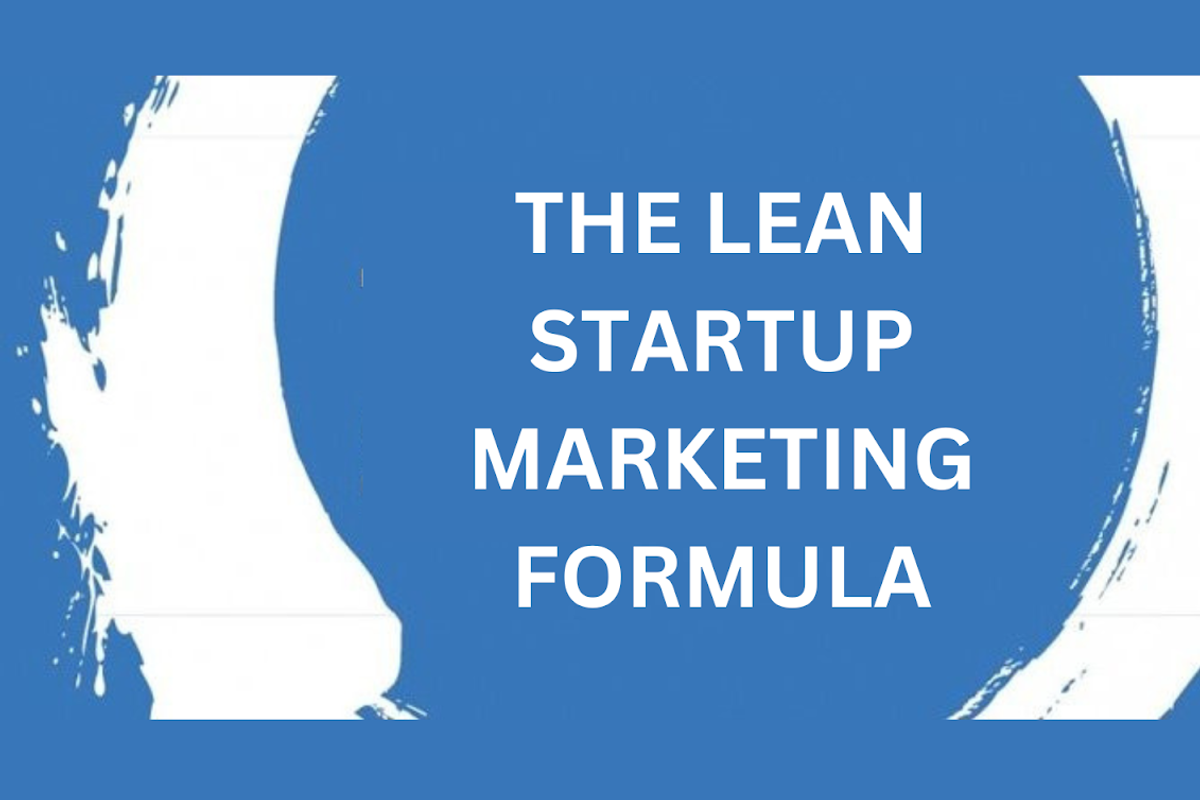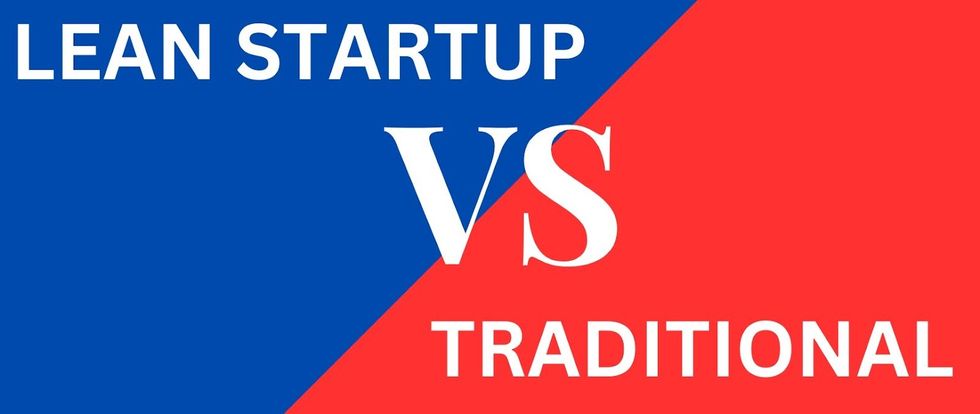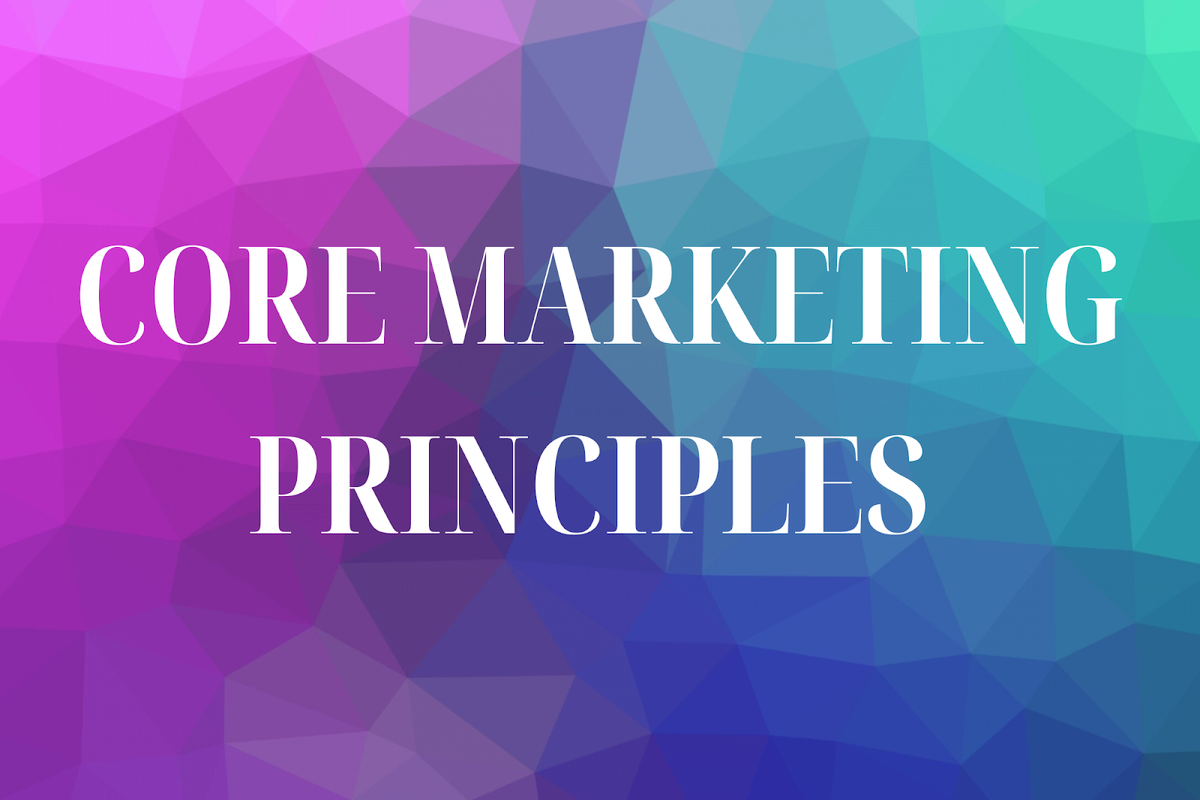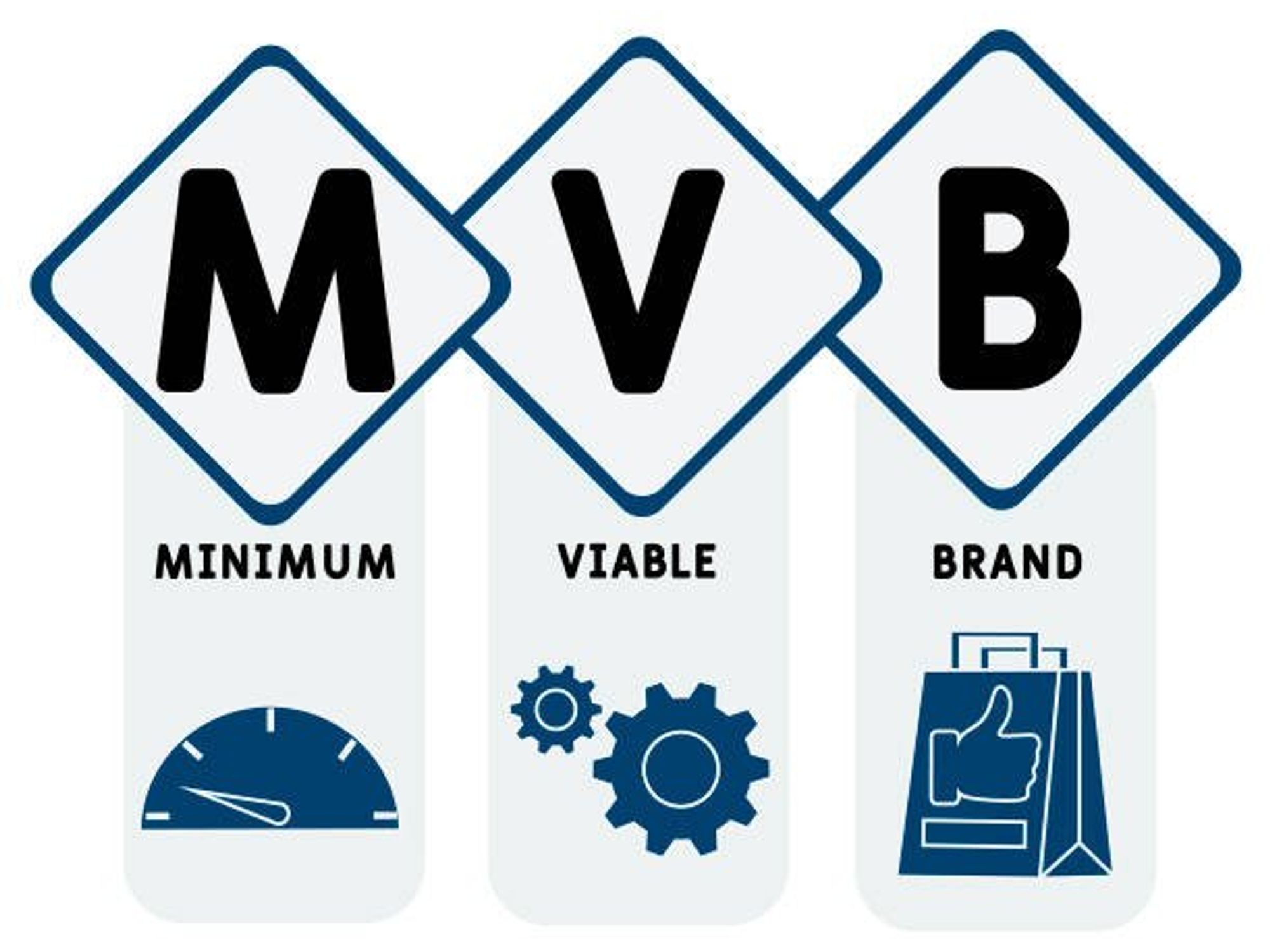
According to data, 95% of startups fail. That's a staggering number. As an entrepreneur, our most valuable asset is time and resources. For those navigating the challenges of a startup environment, the primary objective is to accomplish more with less—to drive value and growth despite limited manpower, modest budgets, and scarce resources. Startups inherently have an element of chaos, yet within this chaos, only a handful of actions at any given time can have a significant impact. That's where the Lean Startup Marketing Formula approach comes in. It's less risky, directing your attention to the right actions at the right time while emphasizing rapid experimentation, solving problems that truly matter to customers, and minimizing waste.
Let's look into the Lean Startup approach, its significance compared to the traditional approach, the core marketing principles, the role of a Minimum Viable Brand (MVB), the process of integrating these principles into your marketing campaign, the essential tools and technologies for its implementation, and the potential challenges to address.
What Is A Lean Startup Approach?
The Lean Startup approach can be distilled as follows: Imagine you’re constructing a boat while already navigating treacherous waters. It’s like embarking on a journey with a makeshift raft with the goal of evolving it into a seaworthy ship that can carry you to your destination. In essence, it’s a structured methodology. It’s all about maintaining business agility, prioritizing swift execution, and fundamentally streamlining operations to make them more cost-effective and efficient.
Why A Lean Startup Approach vs. A Traditional Approach?

Image by Lisa Perry
The Lean Startup method takes the principles of agile project management and extends them to every facet of your business. Notably, Lean Startups often reach the market much faster. Unlike the conventional startup approach, which might spend years attempting to attain perfection and make a grand debut, the Lean Startup thrives on a “build, release, learn, and adapt” philosophy. In essence, it can be boiled down to three essential actions: test, analyze, and decide, which are continually repeated from day one. This approach dramatically reduces the time, effort, expenditure, and resources required before obtaining valuable market feedback. Ultimately, it shifts the focus from perfecting a strategy to swiftly learning from the market, a pivotal aspect for many startups.
The Core Marketing Principles Of The Lean Startup Approach

Image by Lisa Perry
The core marketing principles of the Lean Startup approach include:
- Entrepreneurship: Lean startups are driven by individuals who are self-starters and free thinkers. They take the initiative to explore new ideas and markets without waiting for approvals or check-ins. This principle emphasizes the need for an entrepreneurial spirit across the organization, not just in marketing.
- Scientific Testing Approach: Testing is a fundamental aspect of the Lean Startup methodology. It involves a cycle of testing, analyzing the results, making decisions based on the data, and either iterating, adjusting, or eliminating strategies. This data-driven approach ensures that resources are allocated efficiently.
- Efficiency: Efficiency is a core principle across the entire organization. Lean startups constantly seek ways to operate more efficiently, reducing waste and maximizing productivity. This principle is not exclusive to marketing but applies company-wide.
- Branding: Building a strong brand is essential for a Lean Startup. A solid brand helps in creating long-term loyalty and sustainable success. Effective branding can set a startup apart from the competition and attract a loyal customer base.
- Speed: Speed is crucial in the Lean Startup approach. Getting products and strategies to market quickly allows startups to gather feedback and make necessary adjustments swiftly. Speed is a competitive advantage in today's fast-paced business environment.
These principles collectively contribute to the Lean Startup's success in developing innovative products, scaling efficiently, and responding rapidly to market feedback. They are not limited to marketing alone but guide a Lean Startup's overall approach and mindset.
What Is A Minimum Viable Brand?

Source: iStock
A Minimum Viable Brand is a fundamental and essential branding framework every business should establish when entering the market. While it may not encompass the full depth of a comprehensive brand strategy, it provides a foundation for a company to make a meaningful entry into the market and start generating revenue. The key components of a Minimum Viable Brand typically include:
- Brand Strategy: This involves identifying and defining the fundamental aspects of the brand, such as brand archetypes (which represent the brand’s personality), promise, mission, and vision. The promise is what the brand offers to its customers, the mission is the reason behind what it does, and the vision outlines the long-term impact the brand aims to achieve.
- Positioning: Creating a concise and formulaic paragraph that outlines the brand’s target audience, its intended impact, and how it fits into the market. This positioning statement helps clarify the brand’s unique selling proposition and differentiation from competitors.
- Visual Branding: Emphasizing the importance of the visual elements of branding. Visual aspects include the logo, color scheme, typography, and overall design elements that communicate the brand’s identity and make a strong first impression. Visual branding is critical to creating brand recognition and attracting the target audience.
The idea behind a Minimum Viable Brand is to establish a foundational brand identity that allows the business to start marketing and generating revenue. While it may not be the final, comprehensive brand strategy, having these essential elements in place enables the company to differentiate itself from competitors and make a genuine market entry. The intent is to refine the brand strategy further as the business evolves. These initial branding components make it easier to market the business and succeed in the market authentically.
Integrating Core Principles Into A Marketing Campaign

Source: HubSpot
A strategic approach is essential to effectively integrate core principles into a marketing campaign. Here’s a step-by-step guide on how to do this:
- Research Extensively: Initiate your marketing campaign by dedicating time to research. There’s nothing more crucial than understanding your target audience. Dive deep into market research, competitor analysis, and customer profiling. This foundational step forms the bedrock of your campaign.
- Prioritize Brand Development: Branding is a fundamental pillar of a Lean Startup approach. While you might move units without a robust brand, creating lasting customer loyalty and building a long-term presence in the market hinges on a solid brand foundation. Ensure that your marketing campaign actively contributes to brand identity, recognition, and trust, as it’s integral to achieving sustainable success.
- Build a Minimum Viable Product (MVP): Once you’ve gathered comprehensive insights from your research, start developing your minimum viable product (MVP). This might not just refer to the product or service but also to your marketing assets, such as landing pages, ad creatives, and messaging. Create a version that represents the core offering and aligns with the needs and preferences of your audience.
- Lightweight Marketing Strategies: Skip the traditional approach of crafting lengthy marketing strategies, especially if you’re a startup entering a new market. Instead, focus on keeping your marketing strategies lean and action-oriented. Concentrate on your action plan, which outlines the steps to connect with your target audience effectively. A one-page plan can keep your team aligned and focused on the essentials, improving the chances of successful execution.
- Leverage Industry Insights: Gain valuable knowledge from peers in related industries. Analyze your competitors thoroughly, diving into their target audience, distinguishing factors, messaging strategies, and the tactics they employ. By understanding their successes and shortcomings, you can make well-informed decisions to strengthen your position in the market.
- Quick Execution: Speed is of the essence, particularly for startups. Get your MVP and initial marketing campaigns out to your audience as quickly as possible. Don’t wait for perfection; aim for rapid iteration and improvements based on real-time feedback.
- Automation Tools: As your campaign progresses, consider incorporating marketing automation tools to streamline and expedite your processes. Email marketing platforms, social media scheduling tools, and analytics software can help you efficiently manage and optimize your marketing efforts.
- Focus on a Single Marketing Channel: Concentrate your initial efforts on a single marketing channel when your research indicates your target audience is most active. This allows you to achieve a strong presence and effectiveness in that specific channel rather than spreading your resources too thin.
- Implement a Strong Follow-Up System: A well-thought-out follow-up strategy is crucial. Use email sequences, retargeting ads, and personalized communication to maintain engagement with potential customers and nurture leads through the sales funnel.
- Quality MVP Development: Continually improve and refine your MVP based on customer feedback. Address pain points, iterate on your offering, and make it as appealing and useful as possible to your target audience.
Integrating these core principles into your marketing campaign can create a solid foundation for success. Remember that agility, adaptability, and a focus on delivering value to your audience are paramount in the ever-evolving world of marketing.
Tools & Technology For Implementing Lean Startup Approach

Source: IMPACT
When implementing the Lean Startup approach, having the right tools and technology can significantly enhance efficiency and effectiveness. Here’s a selection of tech tools to consider:
- HubSpot (CRM): HubSpot is a top choice for managing customer relationships and marketing efforts. It offers a feature-rich free platform with excellent functionality. It seamlessly integrates with a wide array of other tools, making it an ideal starting point for cost-effective and efficient communication and customer management. As your business grows, HubSpot scales with you, offering more advanced features for a higher price.
- Klaviyo (Email & Text Marketing): Klaviyo is an excellent email and text marketing tool. It’s user-friendly and intuitive, making designing and executing email and text campaigns easy. Klaviyo is also known for its scalability and affordability, which is particularly valuable for startups looking to engage with their audience through personalized messaging.
- Zapier (Integration & Automation): Zapier is a game-changer for businesses, allowing you to connect tools and apps that might not naturally integrate. It’s a valuable resource for creating automated workflows that save time and money. You can link various software solutions without the need for coding or technical expertise, making it cost-effective and highly efficient. Zapier is particularly valuable for streamlining processes and achieving seamless operations.
- Advertising Platforms (Meta, Google, TikTok): Consider leveraging advertising platforms to generate awareness and attract new prospects. The choice of platform depends on your target audience. Meta (including Facebook and Instagram) and Google Ads are effective for a broad audience. If your target demographic is younger, such as the 16 to 27 age range, TikTok ads can be a powerful tool for reaching them. Effective advertising will help you get in front of new audiences while the rest of your tech stack focuses on nurturing, conversion, and building brand advocates.
These tools provide a foundation for nurturing and converting leads, automating processes, and efficiently managing customer relationships. They allow you to maximize your resources and maintain a Lean approach while rapidly growing your startup. Each tool can scale with you, so if you need additional functionality, these programs provide everything you need as you grow.
Addressing Challenges In Implementing The Lean Startup Approach

Source: Maxine Attong
The Lean Startup approach in marketing presents a world of possibilities but comes with its unique set of challenges. Here are three ways to navigate these challenges effectively:
- Maintain Laser Focus: One of the most critical elements in Lean Startup marketing is unwavering focus. When you discover a strategy or tactic that resonates with your audience and delivers results, resist the temptation to chase every new trend or marketing buzzword. Avoid pursuing every shiny object that catches your eye on YouTube or LinkedIn. Instead, focus your efforts on what’s proven to work. For instance, if you’re a product-based company targeting a younger audience, start with TikTok ads and build a comprehensive marketing strategy around that channel. Gather insights before diversifying. Dominating a single channel with a perfectly executed strategy can be all you need to reach seven figures in revenue.
- Embrace Specialization: Specialization is key to success. Concentrate on serving a specific product to a well-defined audience through one or two effective marketing channels. Trying to be too broad in your approach dilutes your impact. Focus on solving a particular problem for your customers, and once you’ve mastered that, you can consider branching out. It’s about becoming exceptional at one thing before expanding your horizons.
- Continuous Testing and Adaption: Lean Startup is all about agility. When you realize that your assumptions and strategies don’t align with customer feedback, don’t be afraid to pivot. Adapt and iterate your approach based on real-time insights. This flexibility is what sets Lean Startups apart from traditional methods. If something isn’t working as expected, it’s a signal to change course and refine your tactics until you achieve the desired results.
- Managing Ego and Handling Failure: It’s easy to develop a strong attachment to strategies and campaigns and to feel crushed when one fails. The crucial skill here is to become self-aware and practice non-attachment. It’s important to remember that marketing is about solving problems for your customers and meeting their needs, not yours. When a campaign isn’t working as expected, the ability to set aside personal feelings and ego and say, “This isn’t about me; it’s about the customer,” is immensely valuable. Being open to cutting your losses.
The Lean Startup approach encourages a dynamic and iterative mindset. It’s about finding the right balance between focus and flexibility, staying attuned to customer feedback, and continually refining your strategies to align with your target audience’s needs and preferences.
In conclusion, the Lean Startup Marketing Formula approach is a game-changer in the ever-evolving world of marketing. It’s about doing more with less, staying agile, and focusing on what truly matters. With a strong foundation, a commitment to continuous learning, and the right tools, startups can navigate the challenges of the market effectively. Remember, it’s not about you; it’s about your customers and their needs. Stay agile, stay focused, and keep learning.
For more brand marketing insights, follow Cain Castor and Lisa Perry. For a step-by-step guide on developing a brand strategy, check out How to Develop a Brand Strategy by Lisa Perry.
This article was written by Lisa Perry and Cain Castor.
- Sonic Branding: What Is It & Why Is It Important? ›
- Beyond The Myth: Why Effective Branding Is Crucial For Business Success ›
- Emotional Branding: Marketing To The Heart ›
- How Challenger Brands Can Steal The Thunder ›
- Overstimulated Branding: The New Trend That’s Capturing Consumers' Attention ›
- The Impact Of Email, SMS & Marketing Automation Strategies - Work It Daily ›

 Bigstock
Bigstock Bigstock
Bigstock Bigstock
Bigstock


